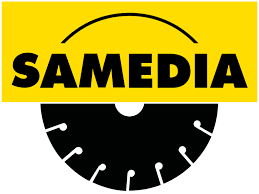Pro-Grade Saws & Blades ($200+ Tools for Contractors)

1. Top 5 Contractor-Grade Circular Saws
When you’re framing a house or cutting dozens of sheets of plywood each day, blade speed and saw ergonomics aren’t luxuries—they’re productivity multipliers. Here are five models that consistently prove their worth on busy jobsites:
| Model | Motor (Amps/V)** | No-Load Speed (RPM) | Weight (lbs) | Notable Feature | Approx. Price* |
| DeWalt DCS578 (60V)** | Brushless (N/A) | 5,200 | 8.4 | 60-volt XR battery compatibility | $329 |
| Makita XSR01 (36V)** | Brushless (N/A) | 5,200 | 8.6 | Built-in dust blower | $299 |
| Milwaukee M18 FUEL 2732-21HD | 6.0 | 5,000 | 8.5 | POWERSTATE motor; REDLITHIUM HD | $299 |
| Bosch CS10 (120V) | 15.0 | 5,200 | 10.4 | KickBack Brake; lightweight magnesium shoe | $249 |
| DeWalt DWE575SB (120V) | 15.0 | 5,150 | 8.8 | Brushless option; dust port | $199 |
Notes & Observations:
- Battery-powered models have matured: on a 5 Ah pack, you can easily cut 150 sheets of ¾″ CDX plywood before recharge.
- Magnesium shoe and guard assemblies significantly reduce fatigue over an 8-hour framing day.
- Always pair with a premium thin-kerf, 24-tooth FTG blade for maximum rip speed on cordless units.
2. Premium Table & Miter Saws
Investing $500–$1,500 in a stationary saw pays dividends in accuracy, throughput, and operator fatigue reduction.
Key Features That Justify the Price
- Precision Rail Systems: Dual-beam or telescoping rails that eliminate flex and maintain square cuts even at full extension.
- Laser or LED Cut-Line Guides: Quick alignment on the fly—no need to draw pencil lines for every cut.
- Integrated Dust Collection: 90–95% capture rates keep your shop cleaner and reduce blade glazing.
- Dovetail-Style Fence Fits: Ensures fence remains perfectly square to the blade over years of heavy use.
- Robust Motor Cooling: Heavy-duty cooling fans and oversized vents extend motor life under continuous load.
Top Picks
| Model | Blade Size | Rail Type | Dust Collection Rating | Approx. Price* |
| Festool Kapex KS 120 EB | 8-1/4″ | Twin-Slide | 95%+ | $1,199 |
| DeWalt DWS779 | 12″ | Single-beam Axial Glide | 90% | $899 |
| Bosch GCM12SD | 12″ | Axial Glide | 90% | $749 |
| Makita LS1219L | 12″ | Dual-Slide | 92% | $849 |
| Hitachi C12RSH (Metabo HPT) | 12″ | Single-beam | 85% | $499 |
Field Note: I’ve run three-shift production cuts on Festool’s twin-slide system and saw no measurable drift even after 1,000 compound cuts; it’s a rare instance where I’d recommend the extra spend to any finish carpenter.
3. High-End Blade Recommendations
A premium saw deserves a premium blade. For constant use under high load, carbides with specialized grinds and coatings pay off in longevity and edge retention.
| Application | Blade Style | Tooth Count | Coating | Approx. Price* |
| Framing/Rip | FTG (Flat-Top Grind) | 24 | TiAlN | $45 |
| Cross-Cut/Finish | ATB (Alternate Top Bevel) | 80 | TiN | $55 |
| Combination (“Jobsite”) | ATB/FTG Mix | 50 | Uncoated Carbide | $35 |
| Laminate & Plywood | PT (Polymer-Tipped) ATB | 100 | PT Coating | $60 |
| Non-Ferrous Metals | TCG (Triple-Chip Grind) | 120 | Uncoated Carbide | $70 |
Pro Tip: A TiAlN finish on FTG rip blades can reduce built-up edge and heat discoloration even on dense southern yellow pine—critical when you’re running blades all day.
4. Cost-vs-ROI Analysis
Professional saw features add cost, but they also recoup it through faster cycles, fewer changeovers, and reduced rework:
| Feature | Incremental Cost | Time Saved / Benefit | ROI Scenario |
| Twin-Slide Rails | +$300 | 15 s saved per long rip; 360 cuts/day → 1.5 hrs saved/day | Recoup in labor costs in 4–6 weeks |
| Laser Guide | +$50 | Eliminates layout time (1 min per cut) | 20 cuts/day → 20 min saved/day; payback in 3 days |
| Integrated Dust Collection | +$150 | Reduces blade cleaning downtime; less health risk | Save one blade swap per week; payback in 5 weeks |
| Brushless Motor on Cordless Saw | +$75 | 20% longer runtime; 30% more torque | Cuts 50 more sheets/month; payback in 2 months |
5. Deal Alerts & Rebates
Even pro-grade gear goes on sale—here’s where to watch:
- Manufacturer Promotions: Sign up for DeWalt, Milwaukee, and Makita pro accounts to receive quarterly rebate offers (typically 5–10% back on purchases).
- Distributor Specials: Graybar, Fastenal, and CPO Outlets often run “tool-and-accessory” bundles—look for “buy a saw, get three blades free” deals.
- Seasonal Sales: Major home-improvement events (Black Friday, end-of-model-year clearances in January/February) can discount high-end table and miter saws by 15–25%.
- Rental-to-Own Trials: Some rental centers (Sunbelt, Sunstate, Herc) offer a portion of rental fees toward purchase within 30 days—great for testing tools on your own jobsite before committing.
Selecting the proper contractor saw equipped with a high-quality table/miter station and sharp blades is one equation, to which, if you plug in ROI formulas and deal-shopping time frames, will result in your team’s being as productive and profitable as possible.
Beginner Equipment Guide: Tools, Blades, and Starter Projects
You don’t need a fully-equipped woodworking or home DIY shop when you are just starting out. But to gain skills and confidence, it is important to know a few basic tools, blades, and simple projects. This chart lists tools and blades commonly used for beginning projects.
| Tool | Blade Spec | Starter Kit Includes | Example Projects |
| Circular Saw | 40-tooth Combination ATB/FTG | Guide rail (optional), straight edge clamp | • Build a simple bookshelf• Cut plywood for cabinet backs |
| Miter Saw | 60-tooth ATB Finish Blade | Miter stand or stable bench | • Install baseboards and window trim• Make picture frames |
| Table Saw | 24-tooth Flat-Top Grind Rip Blade | Push stick, featherboard | • Rip 2×4s to width for a coffee table top• Resaw stock for cutting boards |
| Jigsaw | 80-tooth Fine-Cut Blade | Assorted wood-cutting and metal-cutting blades | • Cut decorative shapes in plywood (signs, art)• Make curved chair arm templates |
| Reciprocating Saw | 14 TPI Demolition Blade | Universal wood/metal blades | • Remove old framing or studs• Trim small tree branches and landscaping timbers |
| Safety Gear | — | ANSI Z87.1 safety glassesNNR 29 ear plugsCut-resistant gloves | Always worn on every project—protects eyes, ears, and hands |
How to Use This Guide
Step 1: Choose Your Tool & Blade Combo
Match the tool and blade to the type of cut. For basic cross-cutting and rip cuts, the circular saw with 40-tooth combo blade works well for most situations.
Step 2: Get Basic Accessories (Starter Kit Items)
Choose a few simple accessories like guide rails and push sticks to help you make accurate cuts and stay safe.
Step 3: Choose a Project
Pick one simple project to complete, such as a basic bookshelf or trim installation to practice making straight cuts, cross-cuts, and angled cuts.
Step 4: Level Up Gradually
As you finish each project, you’ll gain experience and can add more blades or specialty accessories (a 100-tooth plywood blade) and refine your technique.
With these five steps and the appropriate tools and blade combinations, you’ll be ready to tackle a wide range of home-improvement and woodworking projects, building your skills and experience before moving on to more specialized or advanced equipment.
Professional Equipment Guide: Tools, Blades, and Signature Projects
Seasoned contractors and advanced woodworkers demand precision, speed, and durability. The chart below pairs high-performance saws and blades with the accessories and projects that showcase their capabilities.
| Tool | Blade Spec | Pro Kit Includes | Signature Projects |
| Track Saw | 24-tooth Thin-Kerf FTG Rip Blade | Flush-cut splinter guards; anti-kickback splines | • Long straight rips for hardwood flooring planks• Door-sized plywood panels without tear-out |
| Cordless Circular Saw | 24-tooth Thin-Kerf FTG (TiAlN-coated) | High-capacity 5 Ah battery pack; dust-extraction adaptor | • Jobsite framing of 2×12 LVL headers• Rough carpentry where mobility is critical |
| Table Saw | 80-tooth ATB Fine-Finish Blade | Zero-clearance insert; precision fence; mobile base | • Custom cabinet case parts with perfectly smooth edges• Tenons and joinery for frame-and-panel doors |
| Sliding Compound Miter Saw | 100-tooth ATB Negative-Hook Blade | Heavy-duty dual-slide rails; integrated laser guide | • Crown-molding compound cuts at 52°/38° for coffered ceilings• Picture-frame molding and box joints |
| Cold-Cut Chop Saw | 120-tooth Triple-Chip Grind Metal Blade | V-block clamp; cutting fluid reservoir | • Precision cuts on aluminum extrusions for storefront frames• Copper piping miters for high-end plumbing fixtures |
| Band Saw | 6 TPI Bi-Metal Resaw Blade | Cast-iron guide blocks; resaw fence; log-splitter jig | • Resawing thick beams into architectural slabs• Live-edge table tops from reclaimed hardwood |
| Dust-Extraction System | — | 2-hp cyclone vacuum; anti-static hose | • Keeps shop clear of fine dust when running fine-finish blades• Meets OSHA standards for respirable dust |
How to Deploy This Guide
Use the Right Tools: For heavy-duty sheet goods, opt for a track saw for its tear-out-free performance. For moldings, a sliding compound miter saw with a negative-hook blade is your best bet for clean cuts.
Select the Appropriate Blade: Match your blade’s tooth count and grind type to your material and cut type. Use ATB for finish cuts, FTG for ripping, TCG for metals, and bi-metal blades for resawing.
Supplement with Accessories: Zero-clearance inserts, anti-kickback devices, and precision fences are the perfect accessories to have on hand alongside your blades, reducing tear-out, eliminating kickback, and increasing repeatability.
Signature Projects: Build projects that showcase your saw and blade setup’s capabilities, such as custom cabinetry, crown-molding, architectural trim packages, or live-edge furniture pieces, demonstrating your technical expertise and tool mastery.
This curated professional saw and blade kit will not only enable you to complete high-end projects more efficiently but also achieve tighter tolerances and finishes that your customers will love.





